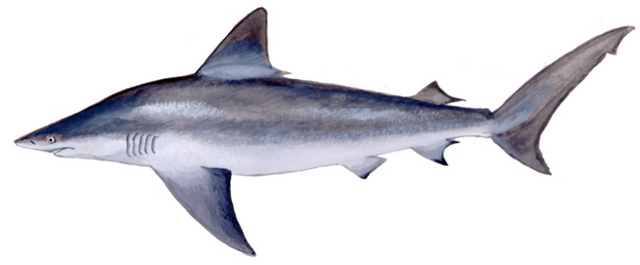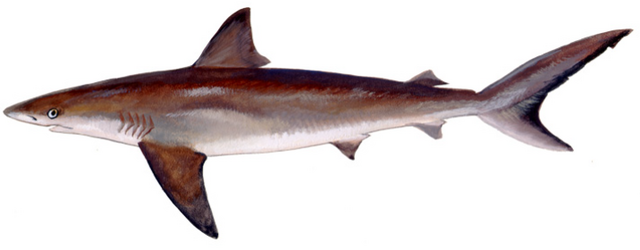Yes, they’re out there.
Delaware’s coastal waters are part of the Atlantic migratory route for many shark species – including sandbar, dusky, and smooth dogfish. But don’t worry – they’re not here for you – they’re just passing through.
“They’re not here for you – they’re just passing through.”
– Every marine biologist ever
Common Shark Species Seen in Delaware Waters

Sandbar Shark
- Very common nearshore, just beyond the surf zone and sandbars
- Usually stay in water deep enough to avoid swimmers but close enough to be seen
- Juveniles: 2 to 4 feet
- Adults: Often 6 to 8 feet

Dusky Shark
- Mostly juveniles may come into Delaware Bay or very nearshore
- Adults prefer deeper offshore waters or open ocean zones
- Juveniles: 3 to 6 feet
- Adults: 11 to 14 feet

Smooth Dogfish
- Very common close to shore, often in shallow water near jetties and inlets
- Small, harmless, and frequently swim near swimmers unknowingly
- Juveniles: 1.5 to 2.5 feet
- Adults: 3 to 5 feet
Should You Worry?
Not really.
There have been only two minor shark bites at Delaware beaches in the past ten years – both nonfatal and likely caused by sharks mistaking someone for food. Sharks aren’t interested in people.
Still, if you want to reduce your already tiny risk:
- Avoid fishing areas
- Skip solo dawn swims
- Try not to splash around like a struggling fish
Just How Rare Are Shark Bites?
In the U.S., your odds of being bitten by a shark are about 1 in 11.5 million.
That said, in 2014, 16-year-old Andrew Vance went for his first swim at Cape Henlopen and came out with 23 stitches after a run-in with a juvenile sandbar shark.

So yes, your odds are tiny – unless you’re Andrew.















